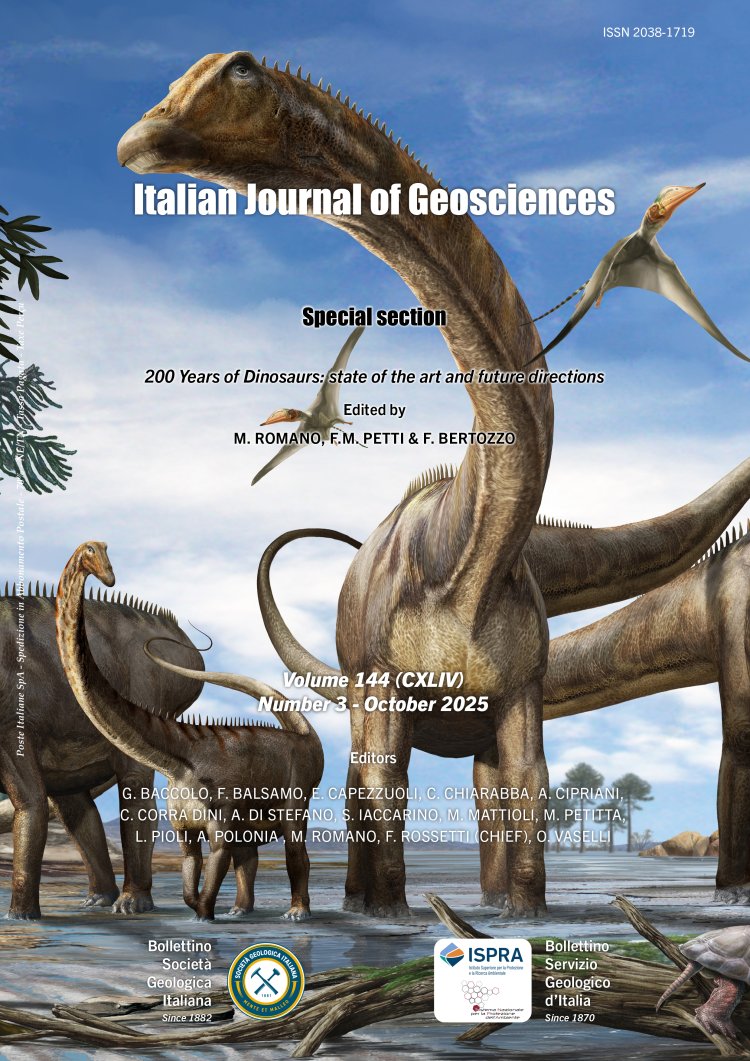

Velociraptor: the state of the art 100 years after the discovery of this iconic dinosaur
Gabriele Bindellini1, Alfio Moscarella1, Peter Makovicky2, Fabio Manucci3 & Marco Romano1
1Dipartimento di Scienze della Terra, Sapienza Università di Roma, Roma, Italy.
2Department of Earth and Environmental Sciences, University of Minnesota, Minneapolis, MN, USA.
3Associazione Paleontologica e Paleoartistica Italiana (APPI), Parma, Italy.
Corresponding author e-mail: marco.romano@uniroma1.it
Volume: 144 (2025) f.3
Pages: 460-486
Abstract
The centenary of the first description of Velociraptor Osborn, 1924 presents a valuable opportunity to examine the extensive research, interpretations, and cultural impact surrounding this iconic theropod dinosaur. Since its discovery on August 11, 1923, by Roy Chapman Andrews’ team in the Gobi Desert, Velociraptor has evolved from an unknown fossil to a household name, driven by both scientific advancements and popular media. representations. Early discoveries, such as the crushed skull and manus claw were pivotal in defining distinctive predatory features in Velociraptor. Subsequent finds, including the “fighting dinosaurs” fossil in 1971, provided profound insights into its anatomy and behaviour, challenging initial assumptions about its predatory tactics and social interactions. The late 20th and early 21st centuries marked a paradigm shift with the discovery of feathered dromaeosaurids, leading to the hypothesis that Velociraptor also possessed feathers. This hypothesis, supported by the presence of quill knobs on its forearm and the discovery of close relatives covered with feathers, transformed its depiction from a scaly predator to a bird-like dinosaur. Modern technologies have furthered our understanding of physiology and sensory capabilities in Velociraptor, revealing sophisticated hunting strategies facilitated by its keen sense of smell and advanced auditory capabilities. Its predatory behaviour, characterised by the use of its sickle claw for grasping prey, underscores its ecological role as an efficient predator. Evidence of varied feeding strategies suggests a versatile approach to survival, while potential social behaviours imply cooperative hunting or interactions. Popular culture, notably the ‘Jurassic Park’ franchise, has significantly shaped public perception, often diverging from scientific accuracy. Bridging this gap through documentaries and educational programs is crucial for fostering a nuanced and more complete understanding. As we look ahead, ongoing research and technological advancements promise to uncover further insights into diversity, behaviour, physiology, and ecological interactions of this dinosaur. This centenary not only celebrates a remarkable palaeontological find but also underscores the dynamic nature of scientific inquiry and the pivotal role of Velociraptor in the broader narrative of dinosaur research.
Keywords
Get Full Text Supplementary Material